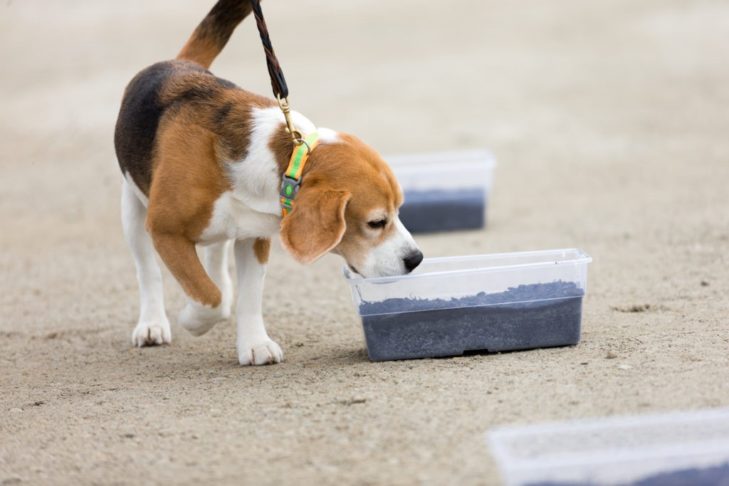They’re in a Safe Place Where They Can Relax
The ancestors of domesticated dogs often found refuge from the wild in dens. Whether it was a small cave, hollowed-out tree trunk, or an underground burrow, a den is any small space that an animal makes its own. These areas make the dog feel safe and in control of their surroundings.
This urge to find a personal space is still present in domesticated dogs, and it’s one of the main reasons why crate training can benefit your pet. Curled up in a comfortable cage, underneath a bed, or behind some furniture makes the dog feel like they are protected on all sides.
Also, since the “dens” have their own scent, it could be why dogs repeatedly hide in the same spot.
How to Get a Dog Out from Hiding
A dog hiding in comfort will come out when it’s ready, but a canine experiencing a problem may be reluctant to come out of its hiding spot. Keep an eye out for the symptoms mentioned above so that you can coax your dog out of hiding if the behavior becomes excessive.
In some cases, you might need to take your dog to a vet or pet specialist. Since hiding and running away are potential symptoms of tension, trauma, and fear, keeping a calm tone and relaxed demeanor is important. Being overly forceful with your dog could make the situation worse.
How To Curb Hiding Habits
One of the best ways to prevent these habits is to teach puppies the right way to play from the start. Avoid giving puppies access to off-limits items like shoes, socks, or kids’ toys and keep in mind the following tips.
Offer appropriate toys and play often, teaching the “give” cue so that your dog learns to return the toys, and establish the proper place where the toys will be kept. At the first sign of hoarding, call your puppy over. When they come back, reward them with a treat.
Fenton recommends the following best practices:
Consider keeping certain items out of sight or reach of your dog. Or only give them access to these items under supervision. For example, let your dog chew a bone in a room where there’s nowhere to hide it, suggests Naito.
Having a surplus is what causes dogs to bury things. If you have many toys, rotate them so your dog only has access to one or two at a time.
When your dog is still in training, consider using a baby gate or barrier so they cannot move their food out of the kitchen or wherever their food is served, says Fenton.
Dogs with mentally and physically stimulating routines are less likely to get into bad habits. Teaching dogs tricks is a great way to bond with your dog while simultaneously teaching polite play manners. Consider the following:

Why Is My Dog Suddenly Hiding In My Closest? | DogVela
You may be aware that dogs often go somewhere quiet when they are about to die. For this reason, when you see your dog is hiding and acting strange, you may fear the worst. While it is a possibility we need to consider, there are many different reasons for this weird behavior in dogs. It may be a health issue, although not necessarily a fatal one. Similarly, there are psychological and circumstantial reasons your dog may be trying to hide somewhere peaceful.
In this AnimalWised article on my dog is hiding and acting strange, we show the importance of identifying the origin of the problem before jumping to conclusions. We will also discuss what we need to do to help our beloved dogs overcome this worrying problem. You may also be interested in: